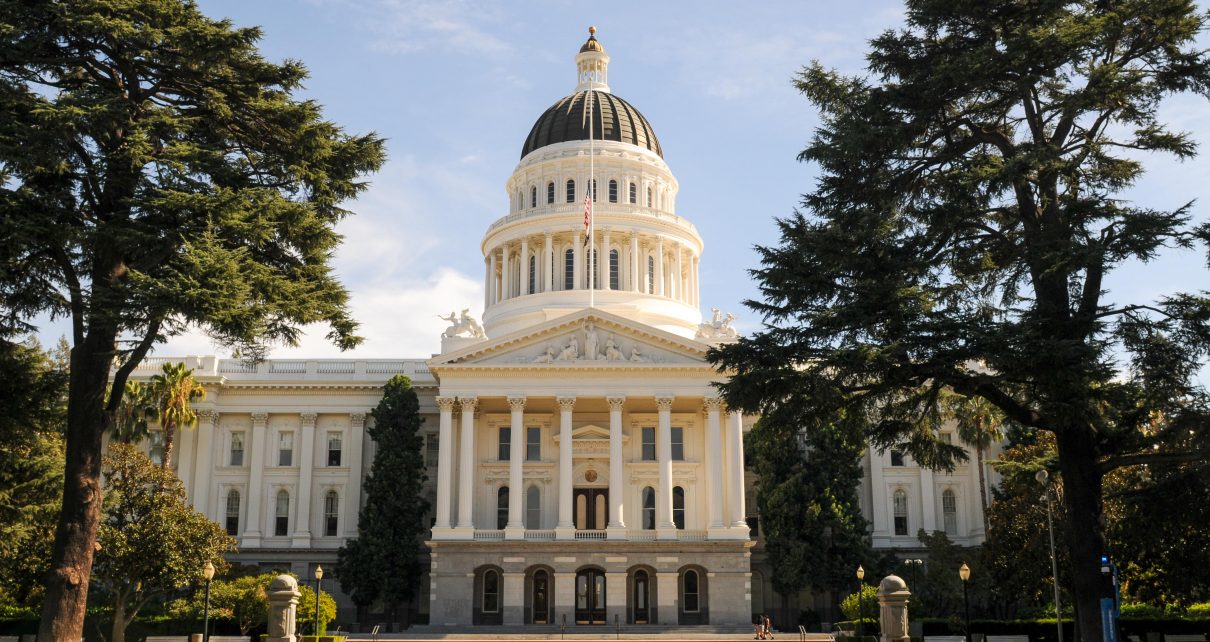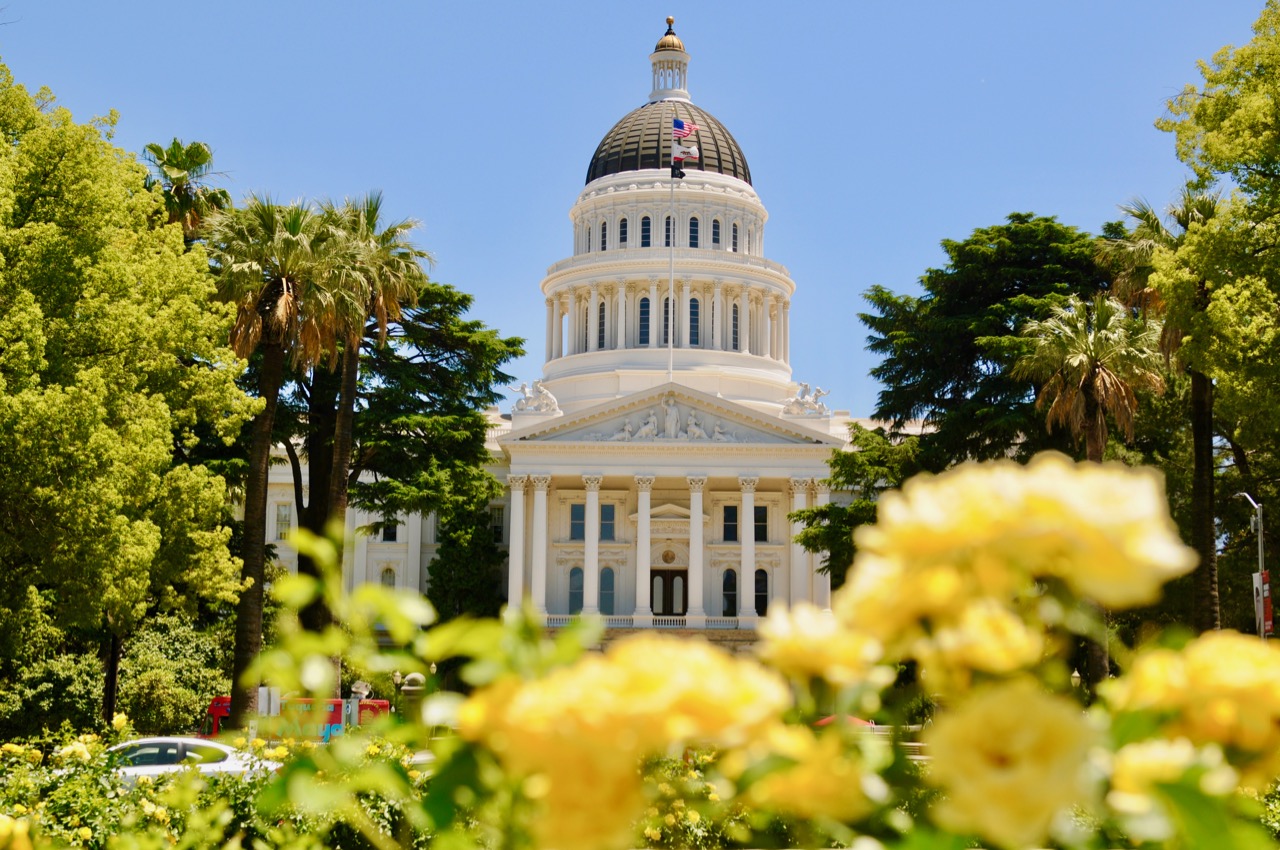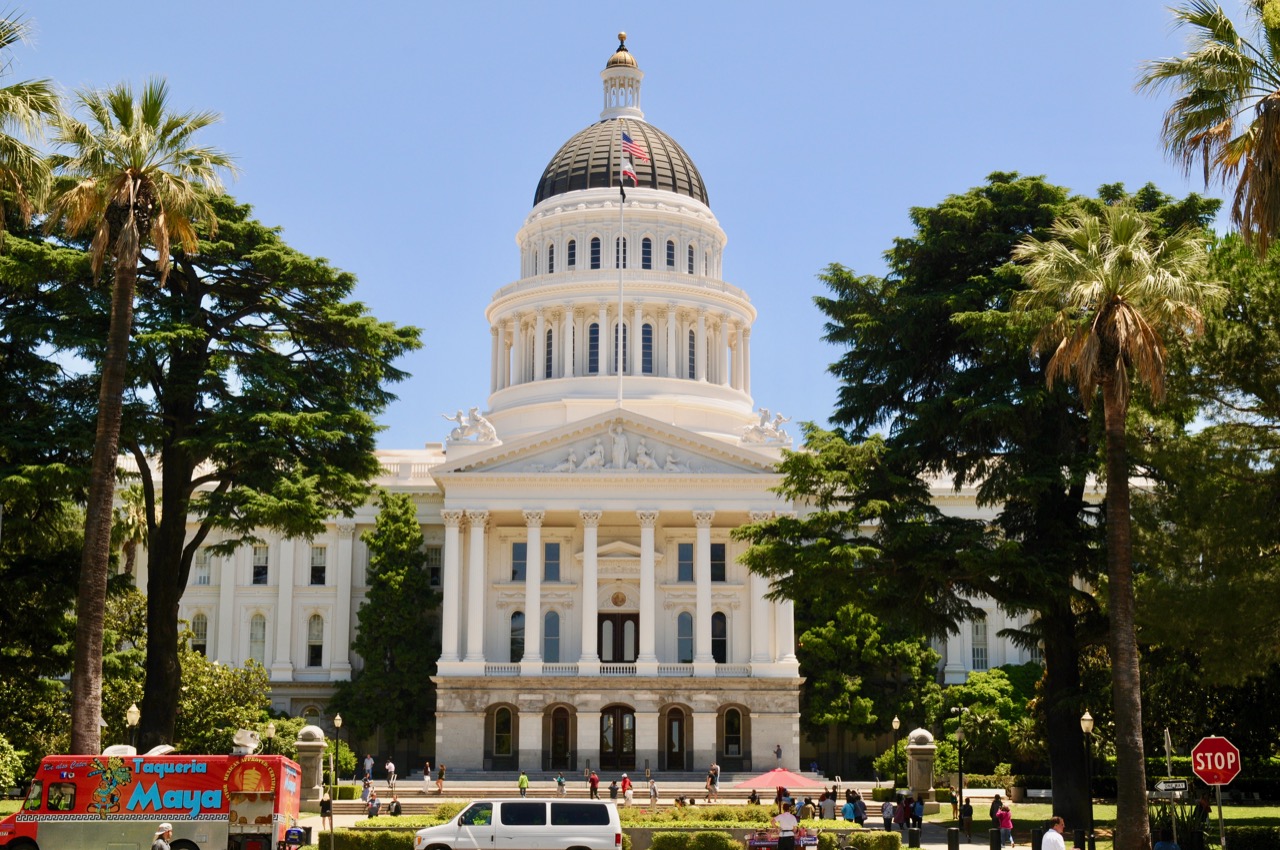
California State Capitol. (Photo: Kevin Sanders for California Globe)
Frequently Asked Questions about Statutory Construction California
What is the Constitutional Avoidance Doctrine?
By Chris Micheli, October 27, 2023 7:51 am
For those not familiar, I put together the following questions and answers for those queries that are most often posed regarding statutory construction in California.
What is the purpose of statutory construction? The “fundamental task is to ascertain the Legislature’s intent so as to effectuate the purpose of the statute.” Smith v. Superior Court California Supreme Court decision.
How do courts generally look at statutory language? As a general rule, in reviewing the text of a statute, the courts will look to the ordinary or plain meaning.
Do statutory headings in California’s Codes determine the meaning or intent of Code sections? No, title, division, part, chapter, article, and section headings do not in any manner affect the scope, meaning, or intent of the provisions of California’s 29 Codes.
What is a Code Section? It is a designated section of one of the 29 Codes.
What is a Code Subdivision? It is a subdivision of a Code section. This is different than the federal U.S. Codes which use the word “subsection” instead.
In California’s Codes, how are verb tenses handled? The present tense includes the past and future tenses; and, the future tense includes the present.
In California’s Codes, how are gender pronouns handled? Until all Code sections are updated to reflect gender-neutral drafting terms, the masculine gender includes the feminine and neuter.
In California’s Codes, how are singular and plural nouns handed? The singular number includes the plural, and the plural the singular.
In California’s Codes, what does the word “shall” signify? “Shall” is mandatory.
In California’s Codes, what does the word “may” signify? “May” is permissive.
Are “canons” used for construing the meaning of statutes? Yes, for purposes of statutory construction, the courts and bill drafters use a series of “canons” to guide them. These include textual canons (intrinsic aids), linguistic presumptions and grammatical conventions, substantive canons, and extrinsic aids.
What are the so-called “clear statement rules”? These are canons that the U.S. Supreme Court has developed as an expression of “quasi-constitutional” values.
What is the “Constitutional Avoidance Doctrine”? Statutes will be construed, if possible, to avoid questions about their constitutionality. Often referred to as just the “avoidance canon,” the fundamental principle of the Constitutional Avoidance Canon is that a court should interpret the Constitution only when it is strictly necessary to do so.
What are the so-called “tie-breaker canons”? They are used when there is a 50/50 split in interpretation of a statute.
What is the “Rule of Lenity”? Penal (or criminal law) statutes whose purpose is to punish offenders must be construed strictly or narrowly. The purpose of this narrow interpretation is to apply any unclear or ambiguous law in a manner that is most favorable to the defendant.
What is the “Rule of the Last Antecedent”? It provides that any qualifying words are to be applied to the words or phrases immediately preceding the qualifying word or words, and are not interpreted as extending to other words.
What is the “Serial Comma Rule”? In a series of three items where each is set off by a comma, each item should be viewed as independent of each other.
What is the “Whole Act Rule”? It is a textual canon that provides, when construing a statute, the text of the entire statute as a whole must be considered by the court.
What is the “Rule Against Surplusage”? If there is another reading of a statute that would avoid a perceived redundancy, then a court will do so.
What is “Ejusdem Generis”? Where there are general words in a statute following particular and specific words, then the general words must be confined to things of the same kind as those specifically mentioned.
What is “Expressio Unius”? When a statute includes a list of specific items, that list is presumed to be exclusive and, therefore, the statute applies only to the listed items and not to other that are not listed.
What is “In Pari Materia”? This is a doctrine of statutory construction that statutes that are on the same subject must be construed together. In other words, if a statute is ambiguous, the court may apply this canon and look to the rest of the statute, or the surrounding statutory scheme, in order to determine the meaning of the ambiguous statute.
What is “Noscitur a Sociis”? The courts should interpret an ambiguous word or phrase by taking into account the word’s or phrase’s use in its textual context.
What is recognizable legislative history? Cognizable legislative history includes documents that courts accept as evidence of legislative history and intent. The Kaufman & Broad Communities Third District Court of Appeal decision describes which materials are considered cognizable or non-cognizable legislative history.
Can the courts take judicial notice of proper legislative history materials? Yes.
What is an extrinsic analysis versus an intrinsic analysis of a statute? An intrinsic analysis is one in which the bill language itself is interpreted by the reviewing court.
When do courts apply general statutes versus specific statutes? A specific statute usually applies over a general statute. The specific statute is usually deemed to be an exception to the rule that is provided by the general statute.
When do courts apply earlier statutes versus later statutes? A more recently enacted statute is usually given more weight than an earlier enacted statute.
Is the presumption that statutes apply retroactively as well as prospectively? California statutes are presumed to apply prospectively, rather than retroactively. The presumption is against retroactive application, unless the Legislature has plainly determined by express statement or other indicia that it was their intent to apply the statute retroactively.
- Visitation Rights for Minor Children - January 7, 2026
- Health Insurance Assignment - January 7, 2026
- Court-ordered Child Support - January 6, 2026




